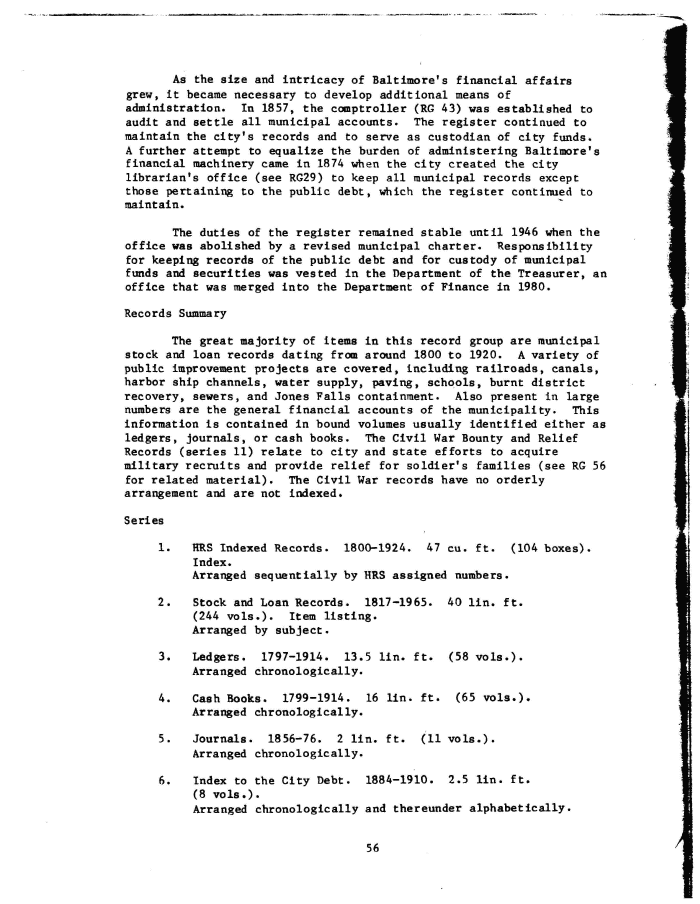|
As the size and intricacy of Baltimore's financial affairs
grew, it became necessary to develop additional means of
administration. In 1857, the comptroller (RG 43) was established to
audit and settle all municipal accounts. The register continued to
maintain the city's records and to serve as custodian of city funds.
A further attempt to equalize the burden of administering Baltimore's
financial machinery came in 1874 when the city created the city
librarian's office (see RG29) to keep all municipal records except
those pertaining to the public debt, which the register continued to
maintain.
The duties of the register remained stable until 1946 when the
office was abolished by a revised municipal charter. Responsibility
for keeping records of the public debt and for custody of municipal
funds and securities was vested in the Department of the Treasurer, an
office that was merged into the Department of Finance in 1980.
Records Summary
The great majority of items in this record group are municipal
stock and loan records dating from around 1800 to 1920. A variety of
public improvement projects are covered, including railroads, canals,
harbor ship channels, water supply, paving, schools, burnt district
recovery, sewers, and Jones Falls containment. Also present in large
numbers are the general financial accounts of the municipality. This
Information is contained in bound volumes usually identified either as
ledgers, journals, or cash books. The Civil War Bounty and Relief
Records (series 11) relate to city and state efforts to acquire
military recruits and provide relief for soldier's families (see RG 56
for related material). The Civil War records have no orderly
arrangement and are not indexed.
Series
1. HRS Indexed Records. 1800-1924. 47 cu. ft. (104 boxes)
Index.
Arranged sequentially by HRS assigned numbers.
2. Stock and Loan Records. 1817-1965. 40 lin. ft.
(244 vols.). Item listing.
Arranged by subject.
3. Ledgers. 1797-1914. 13.5 lin. ft. (58 vols.).
Arranged chronologically.
4. Cash Books. 1799-1914. 16 lin. ft. (65 vols.).
Arranged chronologically.
5. Journals. 1856-76. 2 lin. ft. (11 vols.).
Arranged chronologically.
6. Index to the City Debt. 1884-1910. 2.5 lin. ft.
(8 vols.)'
Arranged chronologically and thereunder alphabetically.
56
|

